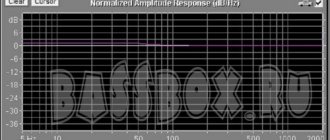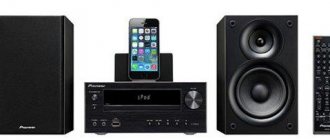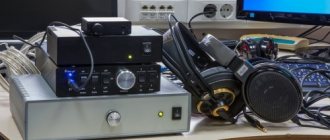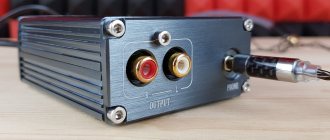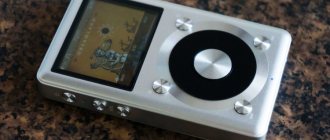How to Connect I2S DAC to Raspberry Pi
First DAC option:
| DAC | Pi A/B | Pi A+/B+, Pi2, Pi3, PiZ | PCM5102 |
| Vcc (+5v) | P5-1 | J8-2 | |
| +3.3v (not used, just to check yourself) | P5-2 | J8-1 | |
| BCK | P5-3 | J8-12 | Audio data bit clock input |
| LRCK(LCK) | P5-4 | J8-35 | Audio data word clock input |
| DATA(DIN) | P5-6 | J8-40 | Audio data input |
| Gnd | P5-7 | J8-39 |
In the description of the DAC, the Chinese writes that BCK and DATA are labeled incorrectly, but this probably refers to early modifications of the board - on mine, the outermost connector is labeled BCK, and that’s how it should be connected.
Second DAC option:
Contacts are added to the first option:
| DAC | Pi A/B | Pi A+/B+, Pi2, Pi3, PiZ | PCM5102 |
| GND | P1-6 | J8-6 | |
| FLT (gnd) | P1-14 | J8-14 | Filter select : Normal latency (Low) / Low latency (High) |
| DMP (gnd) | P5-8 | J8-20 | ?De-emphasis control for 44.1kHz sampling rate(1): Off (Low) / On (High) |
| SCL | P1-5 | J8-5 | ?System clock input |
| FMT (gnd) | P1-18 | J8-18 | Audio format selection: I2S (Low) / Left justified (High) |
| XMT (3.3v) | P1-1 | J8-1 |
For those interested, the connectors are described in detail on the wiki: RPi Low-level peripherals.
PCM5102 datasheet
Setting up Volumio
You will be taken to the beginning of Volumio setup on a page asking you to set your language. Choose what works best for you.
The next screen will ask you to set a hostname for your Raspberry Pi. The default is Volumio. This hostname will also be used as your Pi's web address on the network. Keep in mind that you will need to configure this host on your other devices to use it instead of an IP address.
You will then be asked to set the default audio output. Here Volumio asks you if you are using a DAC. Either way, set the default output you want to use. Don't worry if you want to change this later. You can easily.
At this point you can configure your network. If you're using a Raspberry Pi 3, you should see a WiFi setup option here. Connect to your WiFi network and save everything. This way you won't need the wire again after this initial setup.
Volumio expects you to use a network drive or USB device to store your music. If you are using a NAS or other music resource, enter your information here. You should click the "Advanced Options" button because it allows you to control what type of share you are connecting to.
Once you have successfully connected to your music resource, you should see a message indicating that your database is being updated. You will also see your music listed.
Finally, you will be shown a success message and you can complete the setup.
Using Volumio
Volumio consists of three main sections. The first is what you will see immediately after the initial setup. This is the playback screen. It shows what song is currently playing and allows you to adjust the volume.
To the left of the playback screen, you will see a button to find more music. Volumio focuses primarily on its own music library, but also has Internet radio capabilities. There are many sources of streaming content.
When you click on the different views for your music library, Volumio will present a list of your music accompanied by graphics. The Artist layout displays photos of your favorite bands, and the Album view displays album art.
The button on the right shows your queue. When you select a song to play, it is added to your queue. You can save your queue at any time to turn it into a playlist. You can add songs to your queue without playing immediately by clicking the three stacked dots to the right of the track list.
settings
You can access the Volumio settings menu by clicking on the gear icon. Volumio allows you to reconfigure everything you configured during the initial setup, and you can handle it all from the web interface.
Scroll through and take a look, but most of them are self-explanatory. The System tab is perhaps the most important. This allows you to keep your Volumio installation up to date and prevent it from becoming outdated.
The Network tab is also quite important. There you can connect to a new WiFi network if needed. You can also change your device's network settings.
"Playback" allows you to change your audio output. If you change your sound system, this is where to update Volumio.
You can also add new music sources. This is what the “My Music” tab is for. You can manage your music sources there. It also gives you information about your music library.
Possibilities
— Works with all DACs that support USB 2.0 — DACs supported via I2S — File types supported: FLAC, Alac, Aac, Vorbis, Mp3, DSD — Playback via UPNP — Playback via Airplay — DSD Over PCM support — Built-in Internet radio — Connection to network folders via CIFS/NFS (there is an auto-search) - Plugin system for adding new functions (for example, Spotify Connect and Multiroom) - Auto-update - Russian interface language - Alarm and sleep function - The system works entirely in memory
Put it together
Volumio was designed to be used over the network. This includes its initial setup. Unfortunately, it's not possible to connect to WiFi at first without a GUI, so you'll need to use a wired connection for the initial setup.
Put your SD card in the pi. Next, connect your speakers and any other audio components you included in your setup. Volumio will ask you if you are using a DAC in the settings. Connect an Ethernet cable to connect the Pi to your network. Once everything else is in place, connect the Pi.
The Raspberry Pi will take a few minutes to configure itself and resize its partitions. Be patient. While you wait, open a web browser on your computer and navigate to your router's admin interface. Find a list of devices on your network. Many routes make this the first page you see. Keep an eye out for Volumio's entry on the list. You may have to refresh a couple of times before it appears. When it finally appears, open a new tab in your browser and navigate to your Pi's IP address.
Flash image
Once you have all the ingredients for your new installation, you need to download the Volumio disk image and transfer it to a MicroSD card. First, go to the Volumio download page and download the latest version of Raspberry Pi.
When the download is complete, unzip the image. This is actually quite a large file, so it may take several minutes to complete. You need a raw image ending with an .img extension.
Then you need to flash the image to the SD card somehow. There's a great cross-platform tool called Etcher that you can use. Download the latest version for your operating system and install it.
Insert the SD card into your computer and open Etcher. Select the Volumio image you just extracted. Then select your SD card. When everything looks right, click the last button to burn your image to the card. When Etcher is ready, you can remove the card from your computer.



